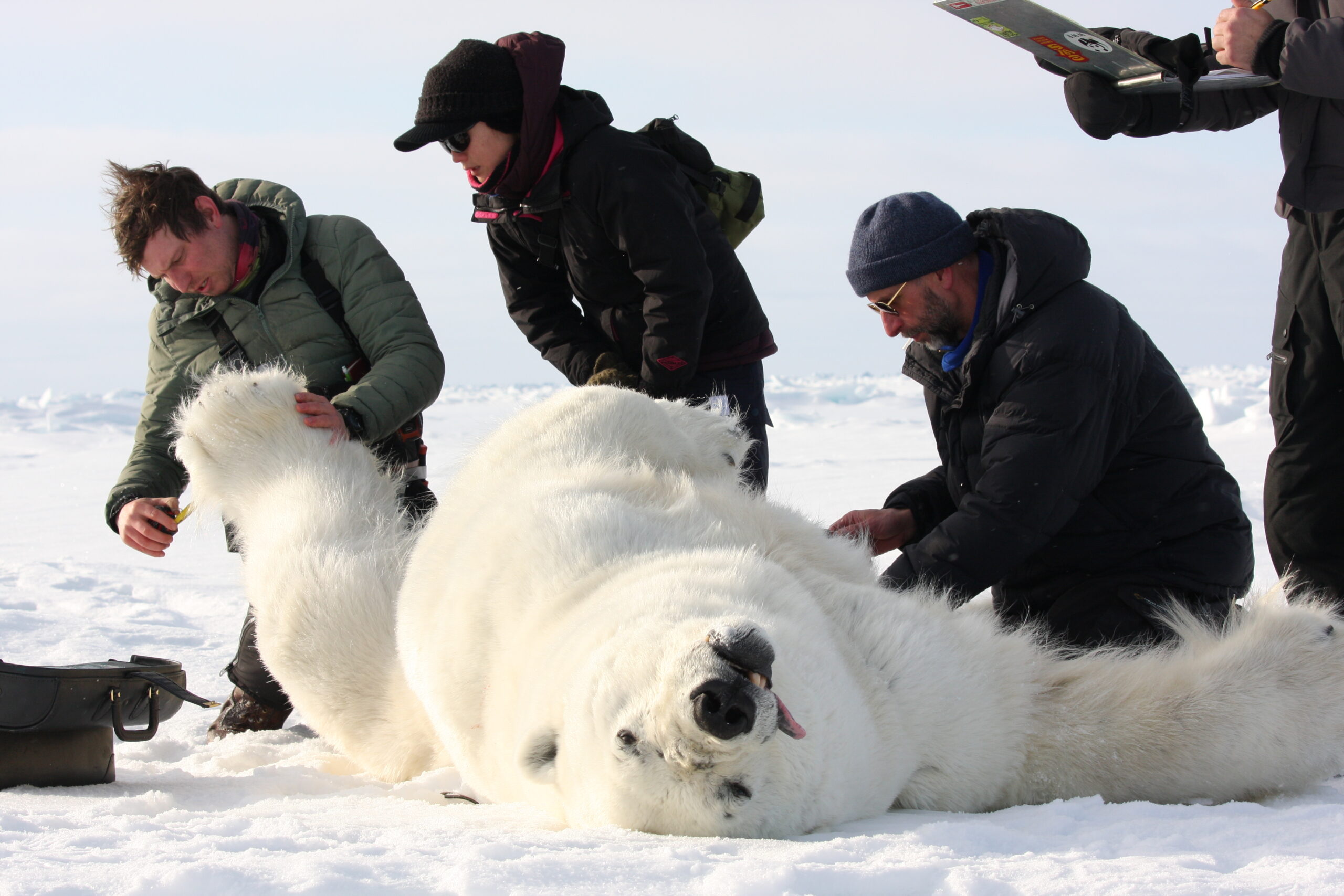This article was published in the Autumn 2024 issue of Litterae Populi. The full issue can be found here.
Some species of bears around the world are on the brink of extinction due to climate change. Leading bear researchers are continuing their research in Japan and abroad, working tirelessly to make valuable scientif ic information about brown bears useful to society. How do researchers at Hokkaido University view the coexistence of bears and humans?

Toshio Tsubota, Director, The Hokkaido University Museum / Professor, Faculty of Veterinary Medicine, Hokkaido University (at The Hokkaido University Museum)
Chasing polar bears
Professor Toshio Tsubota of the Faculty of Veterinary Medicine, who also serves as the director of the Hokkaido University Museum, visited Churchill, a city in northeastern Canada that is often referred to as a sanctuary for polar bears, in April 2023. The city attracts large numbers of polar bears that gather to hunt seals on the sea ice. After 45 years of bear research, Professor Tsubota boarded a helicopter with his fellow researchers to participate in a polar bear ecological study, his long-held aspiration. He and his fellow researchers scanned the vast sea ice from the helicopter. The pilot spotted what appeared to be animal footprints. As they followed the footprints, they discovered a massive polar bear with yellowish fur. They anesthetized it, took blood and other samples, and attached a GPS tag to its ear before releasing the bear. They collected data on the bear's behavior and ecology, and the analysis of the data is in progress.
Ongoing global warming has begun to affect the ecology of bears, including polar bears. Of the three genera and eight species of bears that exist worldwide, six species are now considered at risk of extinction, making their conservation an urgent issue. In Japan, bears are increasingly encroaching into human settlements. In fiscal year 2023, more than 200 people were injured or killed by bears, and more than 9,000 bears were killed as a result. Professor Tsubota voiced his concern, saying, "The situation of bears globally, including in Japan, is far from ideal. A global shortage of researchers specializing in bears has led to a lack of public understanding and communication to society regarding their populations, habitats, physiology, ecology, and behavior."
In light of these circumstances, Professor Tsubota launched crowdfunding campaigns in 2023 and 2024 to support domestic and international bear ecological research, as well as to nurture young researchers. Both campaigns raised nearly double the target of 5 million yen, allowing for the polar bear study to be carried out. "The response exceeded our expectations; I was surprised by how many people are interested in bears," Professor Tsubota remarked. "We're using the funds not only for research but also to raise public awareness about bears."
For coexistence between humans and bears
Professor Tsubota also serves as the president of the Hokkaido Brown Bear Association, a group composed of researchers and government officials, making scientifically informed recommendations for the Hokkaido Government's brown bear management measures. Regarding the implementation of the Hokkaido Brown Bear Management Plan formulated by the Hokkaido Government, he commented: "I feel that the plan's effectiveness in execution is still lacking. We can accomplish much more by assigning specialized wildlife officers to each region who can disseminate to local residents accurate knowledge about brown bear ecology and effective control measures."
When asked what can be done to achieve coexistence between humans and bears, Professor Tsubota said, "Expanding scientific knowledge about bears and widely sharing it is essential both for conserving bears and for establishing proper relations between humans and bears. I'm committed to continuing my research without pause, working toward a future where both can live together."
Bears you can meet at Hokkaido UniversityThe Hokkaido University Museum, on the Sapporo campus, allows visitors to "encounter" many bears. Exhibits include taxidermy specimens, skulls, and even medicine packaging featuring bears. You might be surprised to find taxidermy displays even in small spaces along the corridors. At the Potolo museum shop, you'll find bear merchandise, including some featuring bear silhouettes. From October 10 to November 30, 2024, the museum hold a Polar Bear Exhibition showcasing skeletal specimens, fur, and more. A little farther from the Sapporo campus is the Hokkaido University Botanic Garden, which also includes a museum. The taxidermy bear displayed there is truly impressive. When you visit Hokkaido University, why not go on a bear hunt? The Hokkaido University Museum (Kita 10, Nishi 8, Kita-ku, Sapporo) Botanic Garden, Hokkaido University (Kita 3, Nishi 8, Kita-ku, Sapporo) |
This article was published in the Autumn 2024 issue of Litterae Populi. The full issue can be found here.









